$179.00 Original price was: $179.00.$53.00Current price is: $53.00.
Digital Download: You will receive a download link via your order email
Save up to 85% compared to Salepage prices. In addition, earn additional points. Save more on your next order.
Please contact email: wixzip.cs@gmail.com if you have any questions about this course.
 Purchase this course you will earn 53 Points worth of $5.30
Purchase this course you will earn 53 Points worth of $5.30Elevate your skills with the Steven Capobianco – Movement Specialist Certification course, available for just $179.00 Original price was: $179.00.$53.00Current price is: $53.00. on Utralist.com! Browse our curated selection of over 60,000 downloadable digital courses across diverse Health and Medical. Benefit from expert-led, self-paced instruction and save over 80%. Start learning smarter today!
 .Steven Capobianco – Movement Specialist Certification
.Steven Capobianco – Movement Specialist Certification
Description
Course
- Movement Specialist Certification 2 Hours 11 Minutes
- Movement Specialist Certification 1 Hour 38 Minutes
- Movement Specialist Certification 2 Hours 09 Minutes
Objectives
- Identify the role of neuromuscular movement assessment.
- Assess conscious(cortical) and unconscious(cerebellar) proprioception testing for the patient/client as it relates to human movement.
- Compare and contrast the difference between mobility restrictions and neuro/somatic restrictions (Brain vs.Tissue).
- Integrate the “3 Movement Pillars” and how they relate to human movement control and performance (Brain (Neurological/Psychological), Midline, Mechanical).
- Evaluate movement assessment techniques to identify faulty motor patterns in fundamental movements (e.g.squatting).
- Critique and demonstrate proper use of compression floss bands, foam rollers, kinesiology tape (as a motor control tool) and mobility balls for movement limitations.
- Screen and develop movement with the use of exercise bands, agility and conditioning equipment as well as body weight correctives with appropriate progressions and regressions.
- Integrate the use of digital motion analysis to objectively capture human movement.
Outline
Movement Specialist Certification: Conscious Movement
3 Pillars to Human Movement
Brain (Neurological/Psychological), Midline (Fascia), and Mechanical (Motor Movement)
- Conscious awareness (proprioception) as it relates to human movement
- Members of the three movement zones:
- Ankle Complex
- Hip Complex
- Shoulder Complex
Screening concepts, and highlight evidence supporting selected screening approaches for the three movement zones of the body.
- Brain Screen
- Threat Assessment (Psychological Readiness Questionnaire) to evaluated patient/client’s behavioral/motivational attachment to movement.
- Personality Screen to evaluate the person’s learning style to provide the coach or practitioner with the necessary information to best create behavior change.
- Evaluate Conscious Human GPS System – Conscious neurological assessment using 2-point discrimination testing to assess quality of body representation.
- Foot Complex
- Hip Complex
- Shoulder Complex
- Midline Screen – Screen fascia’s contribution to planar movement function or dysfunction.
- Planar movement quality assessment
- Modified Bunkie Test
- Foot Complex
- Hip Complex
- Shoulder Complex
- Mechanical Screen – Static/Dynamic Human Movement Screening
- Differences of mobility, motor control, and stability (Movement Pyramid)
- Joint by joint approach to identify mobility or stability limitations in movement
Brain Screen
- Workshop Psychological Readiness Questionnaire to assess threat appraisal of the three movement zones
- Workshop The “True Colors Personality Screen” to assess the personality type of the individual as it relates to their “coachability”
- Perform evaluation of Conscious Human GPS System (2-point discrimination) to measure body representation of the three movement zones
Midline (Fascial) Screen
Workshop Modified Bunkie Test
- Prone Plank
- Supine Plank
- R + L Side Plank
- Prone Plank – Feet Elevated (Shoulder Dominant)
- Prone Plank – Elbows Elevated (Hip/Ankle Dominant)
- 3 Point Plank – Upper Body Emphasis (unilateral eval control Shoulder Complex)
- 3 Point Plank- Lower Body Emphasis (unilateral eval control Hip Complex)
Mechanical Screen
Introduce and demonstrate the importance of a safe, effective and efficient screen of a fundamental movement pattern (Deep Body Weight Squat).
- Demonstrate and Practice Subjective Squat Screening
- Foot Complex
- Mobility (lacks ankle DF) (soft: foam roll/ball/floss) (joint: floss/ex bands)
- Stability (planar leak) (agility/conditioning equip or bands)
- Motor Control (balance issue or bilateral imbalance) (vibe/floss)
- Hip Complex
- Mobility (lacks flexion/pelvic tilt) (soft-bands, foam roller) (joint-banded mobes/floss)
- Stability (planar leak) (plank progressions/BW/RNT w bands)
- Motor Control (timing/awareness issue) spiky ball/vibration/pacinian upregulation
- Shoulder Complex
- Mobility (lack of shoulder flexion with OH squat)
- Stability rib flare
- Motor Control (eliminate mobility and stability, then this is the culprit)
- Demonstrate and Practice Objective Squat Analysis – Digital Motion Analysis Technology demonstration and comparison.
- Use digital technology to evaluate joint mechanics and performance of squat
- Foot Complex
- Dorsiflexion/Plantarflexion
- Hip Complex
- Flexion of Hip, Flexion of Trunk
- Shoulder Complex
- Flexion with OH Squat
- Subjective vs objective analysis results
Improve Squat Performance: Use data collected from Brain, Tissue and Mechanical Screens
Demonstrate and practice corrective strategies to remediate identified dysfunctions of the three movement centers
Foot Complex Interventions:
Triage primary impairment
- Mobility Impairment, initiates mechanical intervention
- Stability Impairment, initiates tissue intervention
- Motor Control Impairment, initiates brain intervention
Select appropriate tools mobility balls, exercise bands, foam rollers, compression flossing bands, kinesiology tape, agility and conditioning equipment
Re-Screen Squat to assess change
- Utilize results from the screen to intervene:
- Mobility Intervention
- Mechanical problem needs mechanical solution
- If not Mechanical look to Tissue
- Mobility Tactics – Neurologic Foam Rolling, Targeted Compression Floss Bands, Vibration techniques.
- Stability Intervention
- Tissue problem needs tissue solution
- If not Tissue, look to Brain
- Stability Tactics – Exercise bands isolated exercise
- Isotonic, Eccentric, Isometric use of exercise bands
- Use of body weight plank progression/regressions
- Sagittal Plane (Anterior/Post Chains) – Prone Plank Progressions/Regressions
- Frontal Plane (Lateral Chain)– Side Plank Progressions/Regressions
- Transverse Plane (Functional/Helical Chains) – Upper/Lower Anti-Rotation Control Progression and Regressions
- Re-Screen Squat to assess change
- Motor Control Intervention
- Brain problem needs brain solution
- If not Mechanical or Tissue, Brain is only culprit left
- Motor Control Tactics – Kinesiology Tape, Foam rollers, mobility balls, exercise bands and vibration
- Threat Tactics- psych-social considerations, client/patient education, regressions of squat with equipment (chair), increased physical or psycho/social support
Hip Complex Interventions:
Triage primary impairment
- Mobility Impairment, initiates mechanical intervention
- Stability Impairment, initiates tissue intervention
- Motor Control Impairment, initiates brain intervention
Select appropriate tools mobility balls, exercise bands, foam rollers, compression flossing bands, agility and conditioning equipment
Perform tool-based intervention
Re-Screen Squat to assess change
- Utilize results from the screen to intervene:
- Mobility Intervention
- Mechanical problem needs mechanical solution
- If not Mechanical look to Tissue
- Mobility Tactics – Neurologic Foam Rolling, Targeted Compression Floss Bands, Vibration
- Stability Intervention
- Tissue problem needs tissue solution
- If not Tissue, look to Brain
- Stability Tactics – Exercise bands isolated exercise
- Isotonic, Eccentric, Isometric use of exercise bands
- Use of body weight plank progression/regressions
- Sagittal Plane (Anterior/Post Chains) – Prone Plank Progressions/Regressions
- Frontal Plane (Lateral Chain)– Side Plank Progressions/Regressions
- Transverse Plane (Functional/Helical Chains) – Upper/Lower Anti-Rotation Control Progression and Regressions
- Re-Screen Squat to assess change
- Motor Control Intervention
- Brain problem needs brain solution
- If not Mechanical or Tissue, Brain is only culprit left
- Motor Control Tactics – Kinesiology Tape, Foam rollers, mobility balls, exercise bands and vibration
- Threat Tactics- psych-social considerations, client/patient education, regressions of squat with equipment (chair), increased physical or psycho/social support
Shoulder Complex Interventions:
Triage primary impairment
- Mobility Impairment, initiates mechanical intervention
- Stability Impairment, initiates tissue intervention
- Motor Control Impairment, initiates brain intervention
Select appropriate tools mobility balls, exercise bands, foam rollers, compression flossing bands, agility and conditioning equipment
Perform tool-based intervention
Re-Screen Squat to assess change
- Utilize results from the screen to intervene:
- Mobility Intervention
- Mechanical problem needs mechanical solution
- If not Mechanical look to Tissue
- Mobility Tactics – Neurologic Foam Rolling, Targeted Compression Floss Bands, Vibration
- Stability Intervention
- Tissue problem needs tissue solution
- If not Tissue, look to Brain
- Stability Tactics – Exercise bands isolated exercise
- Isotonic, Eccentric, Isometric use of exercise bands
- Use of body weight plank progression/regressions
- Sagittal Plane (Anterior/Post Chains) – Prone Plank Progressions/Regressions
- Frontal Plane (Lateral Chain)– Side Plank Progressions/Regressions
- Transverse Plane (Functional/Helical Chains) – Upper/Lower Anti-Rotation Control Progression and Regressions
- Re-Screen Squat to assess change
- Motor Control Intervention
- Brain problem needs brain solution
- If not Mechanical or Tissue, Brain is only culprit left
- Motor Control Tactics – Kinesiology Tape, Foam rollers, mobility balls, exercise bands and vibration
- Threat Tactics- psych-social considerations, client/patient education, regressions of squat with equipment (elastic band), increased physical or psycho/social support
Speaker

Steven Capobianco, DC, MA, DACRB, PESRelated seminars and products
Dr. Capobianco holds a BA and MA in Kinesiology and Exercise Science in addition to a doctorate in Chiropractic Medicine. Steve is a practicing sports chiropractor, currently holding a Diplomate in Rehab from the ACA and a Performance Enhancement Specialists certification from the NASM. Dr. Capobianco launched a sports-specific rehab and performance institute called ProjectMOVE in Denver, Colorado that focuses on identifying motor control dysfunction in an attempt to enhance human performance from the professional athlete to weekend warrior. Steve is an avid athlete with a passion for sports. He has spent 25 years competing in ice hockey, lacrosse, triathlons, adventure racing, and natural bodybuilding. Steve is the Senior Director of Medical Education for Rocktape, pioneering evidence-informed education and products that challenge the current understanding of human movement practices. He authored the Fascial Movement Taping manual and lectures worldwide on the movement-based corrective tactics and strategies.
Speaker Disclosure:
Financial: Steve Capobianco is the medical director at Rock Tape, Inc. He is the owner of Project Move. He is an adjunct instructor at Palmer College of Chiropractic West. Dr. Capobianco receives a speaking honorarium from PESI, Inc.
Non-financial: Steve Capobianco has no relevant non-financial relationship to disclose.
Salepage: https://catalog.pesi.com/item/movement-specialist-certification-65123
Archive: https://archive.fo/wip/O3QNC
Delivery Method
– After your purchase, you’ll see a View your orders link which goes to the Downloads page. Here, you can download all the files associated with your order.
– Downloads are available once your payment is confirmed, we’ll also send you a download notification email separate from any transaction notification emails you receive from Forimc.me.
– Since it is a digital copy, our suggestion is to download and save it to your hard drive. In case the link is broken for any reason, please contact us and we will resend the new download link.
– If you cannot find the download link, please don’t worry about that. We will update and notify you as soon as possible at 8:00 AM – 8:00 PM (UTC+8).
Thank You For Shopping With Us!
Be the first to review “Steven Capobianco – Movement Specialist Certification” Cancel reply
Cultivate continuous growth with the Steven Capobianco – Movement Specialist Certification course at Utralist.com! Unlock lifetime access to premium digital content, meticulously designed for both career advancement and personal enrichment.
- Lifetime Access: Enjoy limitless access to your purchased courses.
- Exceptional Value: Benefit from savings up to 80% on high-quality courses.
- Secure Transactions: Your payments are always safe and protected.
- Practical Application: Gain real-world skills applicable to your goals.
- Instant Accessibility: Begin your learning journey immediately after buying.
- Device Compatible: Access your courses seamlessly on any device.
Transform your potential with Utralist.com!
Related products
Health and Medical
= 43 Points
= 53 Points
Health and Medical
Certificate Course in Optimal Aging: Evidence-Based Interventions for Older Adults – Carole Lewis
= 95 Points
Health and Medical
= 43 Points
Health and Medical
The Heart of Complex Cardiac Care: Strategies for Rapid Action – Marcia Gamaly, Robin Gilbert
= 85 Points
Health and Medical
= 33 Points
Health and Medical
= 29 Points
Health and Medical
= 43 Points

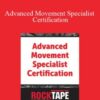
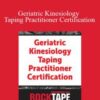
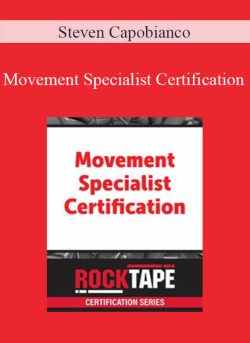
 .Steven Capobianco – Movement Specialist Certification
.Steven Capobianco – Movement Specialist Certification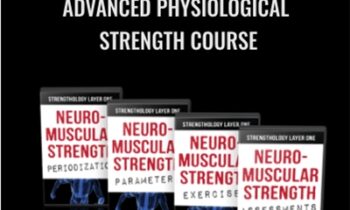
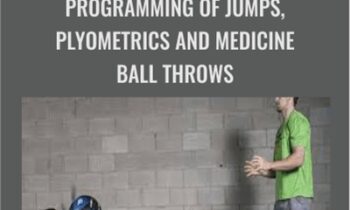

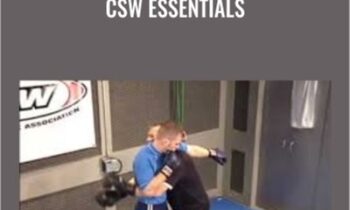
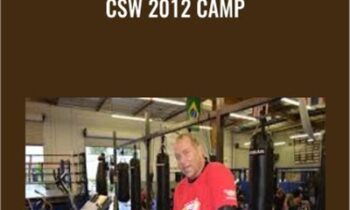

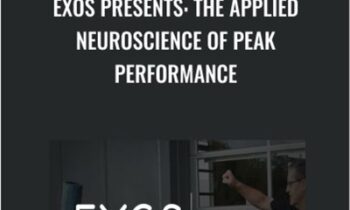
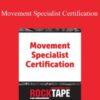
Reviews
There are no reviews yet.